{"article":{"id":"2221576","title":"Coastal economic zones become pillars of local development","description":"Many coastal economic zones have truly become pillars and made significant contributions to the economic development of localities such as Nghi Son, Dinh Vu - Cat Hai, Vung Ang, Chu Lai, Dung Quat, Phu Quoc.","contentObject":"
Vietnam possesses significant potential and strengths in developing its marine economy. The 8th Conference of the Central Committee of the Communist Party of Vietnam (12th term) issued Resolution No. 36-NQ/TW on the "Strategy for Sustainable Development of Vietnam's Marine Economy to 2030, with a Vision to 2045," which aims for Vietnam to become a strong maritime nation by 2030; to fundamentally achieve the criteria for sustainable marine economic development; to form a marine ecological culture; and to proactively adapt to climate change.
\nAttracting many large projects
\nAccording to Dr. Le Van Hung from the Institute for Sustainable Regional Development Research (Vietnam Academy of Social Sciences), by 2023, Vietnam had a total of 18 coastal economic zones (EZs) established and developed. These coastal EZs are mostly concentrated in the central coastal region (11 zones), with 4 zones in the northern region and 3 zones in the southern region (not including the Ninh Co EZ in Nam Dinh province, which has been added to the planning for the development of coastal EZs in Vietnam).
\nCoastal economic zones mostly have very large planned areas, such as Van Phong Economic Zone with an area of 150,000 hectares, Nghi Son Economic Zone after adjustments with an area of 106,000 hectares, Phu Quoc Economic Zone with nearly 60,000 hectares, and Van Don Economic Zone with over 55,000 hectares.
\nDr. Le Van Hung stated that planning large areas is crucial for building a comprehensive and integrated infrastructure in the long term. This helps coastal economic zones not only serve production and business activities but also transform into new urban areas, creating a favorable environment for workers and residents to live in.
\nRegarding attracting investment capital, in the approximately 20 years since their establishment, coastal economic zones have attracted numerous investment projects in production and business. As of 2021, there were 506 foreign investment projects and 1,648 domestic investment projects attracted to coastal economic zones. Of these, the Dinh Vu – Cat Hai coastal economic zone attracted the largest number of investment projects with 205 foreign investment projects and 105 domestic investment projects; the Nghi Son economic zone attracted 19 foreign projects and 233 domestic projects; and the Dung Quat economic zone attracted 49 foreign projects and 195 domestic projects.
\nCoastal economic zones have attracted approximately US$49 billion in foreign direct investment and VND 1,245.5 trillion in investment from domestic projects.
\n"Thanks to attracting large investment projects, coastal economic zones have quickly become leading contributors to the budget revenue of provinces/cities. Currently, many coastal economic zones contribute a large portion of the budget revenue of provinces, such as Dung Quat Economic Zone contributing up to 80% of the province's total budget revenue, Chu Lai Economic Zone contributing 65%, Nghi Son Economic Zone contributing 61.3%, Vung Ang Economic Zone contributing 56%, and Phu Quoc Economic Zone accounting for 43.2%. They also create a large number of jobs for workers."
\n"For disadvantaged provinces, this is an important source of funding that helps localities continue to invest in infrastructure serving socio-economic development. For these localities, coastal economic zones are truly the most important growth poles for industrial development and local revenue collection…," Dr. Le Van Hung assessed.
\nAccording to this source, coastal economic zones have begun to form several industry clusters, such as the Chu Lai Economic Zone for automobile manufacturing and assembly, the Phu Quoc Economic Zone for tourism, and the Dung Quat and Nghi Son Economic Zones for petrochemicals and refining…
\nMaking a significant contribution to the local economic development.
\nDr. Le Van Hung observed that coastal economic zones have initially made positive contributions to the development process of localities, especially in promoting industrial development and structural transformation to gradually narrow the development gap between regions.
\nPositive contributions include the significant transformation in the economic development of provinces and cities by several coastal economic zones, attracting investment capital, contributing to industrial value, export value, state budget revenue, and improving labor productivity. Many coastal economic zones have truly become pillars and made significant contributions to local economic development, such as Nghi Son, Dinh Vu - Cat Hai, Vung Ang, Chu Lai, Dung Quat, and Phu Quoc.
\nThanks to the formation and construction of coastal economic zones, socio-economic infrastructure in localities has gradually been invested in and improved. Some coastal economic zones have seen significant changes in transportation connectivity, port systems and logistics services, airports, industrial parks, training facilities, and healthcare services, thanks to both investment from the state budget and mobilization from the domestic and foreign private sectors.
\nHowever, according to Dr. Le Van Hung, alongside the positive results, coastal economic zones also reveal some limitations, such as not yet attracting high-quality investors with sufficient capacity to create branded products and compete in the international market.
\nIn particular, the businesses attracted have not yet created a significant spillover effect on the development of industry clusters and supporting industries to create specialization in development. Therefore, linkages and cooperation between businesses within the zone, between FDI businesses and the domestic sector, and between businesses within and outside the zone remain very limited…
\nFurthermore, large enterprises attracted to coastal economic zones are currently mainly concentrated in resource-intensive and energy-intensive sectors (such as oil refining, steel, thermal power, chemicals, cement, and construction materials), so the risks of negative impacts on the environment are unavoidable, especially long-term impacts on the ecological environment.
\nFurthermore, the construction process, business operations, and environmental protection management are not yet strictly controlled and protected. Many coastal economic zones still lack centralized wastewater treatment facilities and hazardous waste and garbage collection areas.
\nTo promote coastal economic zones as true drivers of local and regional development, Dr. Le Van Hung proposed that Vietnam should conduct research to develop pilot policies focused on creating a favorable environment for the development of 2 to 3 clusters of coastal economic zones in each region. This would allow resources to be truly concentrated on improving infrastructure, social services, and tools for protecting and restoring the ecological environment, thereby creating truly sustainable coastal economic zones.
\nAt the same time, coastal economic zones need to pilot several development models such as green industrial parks and production and business zones focused on specialization/concentration of a specific group of industries/sectors.
\nHo Giap
","displayType":1,"options":0,"category":{"name":"Investment","detailUrl":"/business/investment","wikiCategoryDetailUrl":"/file/business/investment","relatedIds":["00000G","00000H","00000K","00000J"],"subIds":["000003","00000G","00000H","00000J","00000K","00000L","00004K"] ,"fullAvatarUrl":"","fullFacebookShareUrl":""},"displayTypeToInt":1,"detailUrl":"/khu-kinh-te-ven-bien-tro-thanh-tru-cot-phat-trien-cua-cac-dia-phuong-2221576.html","fullAvatarUrl":"https://static-images.vnncdn.net/files/publish/2023/12/1/khu-kinh-te-ven-bien-tro-thanh-tru-cot-phat-trien-cua-cac-dia-phuong-770.jpg","fullAvatarFbUrl":"https://static-images.vnncdn.net/files/publish/2023/12/1/khu-kinh-te-ven-bien-tro-thanh- tru-cot-phat-trien-cua-cac-dia-phuong-771.jpg","updatedDate":"2023-12-01T14:14:11","isHiddenDescription":"","publishDateDisplay":"01/12/2023","hasCover":false},"articlesSameCategory":[{"id":"2221077","title":"Marine economy helps Quang Nam and Quang Ngai develop sustainably","description":"Quang Nam and Quang Ngai are promoting marine economic development. This is considered the right and promising path to help the economies of these two provinces develop in the right direction.","displayType":1,"category":{"name":"Head investment","detailUrl":"/business/investment","wikiCategoryDetailUrl":"/file/business/investment","relatedIds":["00000G","00000H","00000K","00000J"],"subIds":["000003","00000G","00000H","00000J","00000K","00000L","00004K"],"fullAvatarUrl":"","fullFacebookShareUrl":""},"displayTypeToInt":1,"detailUrl":"https://vietnamnet.vn/kinh-te-bien-giup-quang-nam-quang-ngai-phat- trien-ben-vung-2221077.html","fullAvatarUrl":"https://static-images.vnncdn.net/files/publish/2023/12/1/kinh-te-bien-giup-quang-nam-quang-ngai-phat-trien-ben-vung-132.jpg","isFee":false,"priority":0,"zoneId":"","publishDate":"2023-12-01T06:32:47","option":0,"avatarIconPosition":0,"updatedDate":"0001-01-01T00:00:00","isPin":false},{"id":"2221318","title":"Economic News 30/11: 'Adjusting' credit room; New investor joins bầu Đức's company,"description":"The State Bank adjusts credit growth targets among banks; Hoang Anh Gia Lai sees new investor; FLC's infamous 2,300 billion VND project in Thanh Hoa is revoked... these are some of the notable economic news of the day.","displayType":1,"category":{"name":"Head investment","detailUrl":"/business/investment","wikiCategoryDetailUrl":"/file/business/investment","relatedIds":["00000G","00000H","00000K","00000J"],"subIds":["000003","00000G","00000H","00000J","00000K","00000L","00004K"],"fullAvatarUrl":"","fullFacebookShareUrl":""},"displayTypeToInt":1,"detailUrl":"https://vietnamnet.vn/ban-tin-kinh-te-30-11-noi-room-tin-dung-nha-dau-tu-moi-vao-co ng-ty-bau-duc-2221318.html","fullAvatarUrl":"https://static-images.vnncdn.net/files/publish/2023/11/30/ban-tin- Kinh-te-3011-chinh-room-tin-dung-nha-dau-tu-moi-vao-cong-ty-bau-duc-1356.jpg" ,"isFee":false,"priority":0,"zoneId":"","publishDate":"2023-11-30T19:39:55","option":0,"avatar IconPosition":0,"updatedDate":"0001-01-01T00:00:00","isPin":false},{"id":"2221276","title":"Home "Familiar investors win bid for Quang Tri Airport project worth nearly 6,000 billion VND,"description":"T&T Infrastructure Investment and Development Co., Ltd. and CIENCO4 Group Joint Stock Company are the two contractors that have just been approved to construct Quang Tri Airport.","displayType":1,"category":{"name":"Investors investment","detailUrl":"/business/investment","wikiCategoryDetailUrl":"/file/business/investment","relatedIds":["00000G","00000H","00000K","00000J"],"subIds":["000003","00000G","00000H","00000J","00000K","00000L","00004K"],"fullAvatarUrl":"","fullFacebookShareUrl":""},"displayTypeToInt":1,"detailUrl":"https://vietnamnet.vn/nha-dau-tu-quen-mat-trung-thau-du-an-san-bay-quang-tri -gan-6-000-ty-2221276.html","fullAvatarUrl":"https://static-images.vnncdn.net/files/publish/2023/11/30/nha-dau-tu-quen-mat-trung-thau-du-an-san-bay-quang-tri-gan-6000-ty-1353.jpg","isF ee":false,"priority":0,"zoneId":"","publishDate":"2023-11-30T19:34:21","option":0,"avatarIco nPosition":0,"updatedDate":"0001-01-01T00:00:00","isPin":false},{"id":"2221196","title":"Increase "Green growth is the key to sustainable development,"description": "Green growth towards economic prosperity, environmental sustainability and social equity is not only an inevitable choice, but also an opportunity for Vietnam to become a pioneering nation in the region.","displayType":1,"category":{"name":"Head investment","detailUrl":"/business/investment","wikiCategoryDetailUrl":"/file/business/investment","relatedIds":["00000G","00000H","00000K","00000J"],"subIds":["000003","00000G","00000H","00000J","00000K","00000L","00004K"],"fullAvatarUrl":"","fullFacebookShareUrl":""},"displayTypeToInt":1,"detailUrl":"https://vietnamnet.vn/green-growth-is-the-key-to-development- trien-ben-vung-2221196.html","fullAvatarUrl":"https://static-images.vnncdn.net/files/publish/2023/11/30/tang-truong-xanh-la-chia-khoa-de-phat-trien-ben-vung-1166.jpg","isFee":fa lse,"priority":0,"zoneId":"","publishDate":"2023-11-30T17:57:25","option":0,"avatarIconP osition":0,"updatedDate":"0001-01-01T00:00:00","isPin":false},{"id":"2221263","title":"Because Why is the Khe Sanh wind power project negotiating a shareholding structure with a foreign investor?,"description":"The Khe Sanh wind power project (Huong Hoa, Quang Tri) is negotiating and planning a shareholding structure with a Hong Kong investor to cooperate in management and operation in order to optimize the efficiency and lifespan of the project.","displayType":1,"category":{"name":"Head investment","detailUrl":"/business/investment","wikiCategoryDetailUrl":"/file/business/investment","relatedIds":["00000G","00000H","00000K","00000J"],"subIds":["000003","00000G","00000H","00000J","00000K","00000L","00004K"],"fullAvatarUrl":"","fullFacebookShareUrl":""},"displayTypeToInt":1,"detailUrl":"https://vietnamnet.vn/vi-sao-dien-gio-khe-sanh-dam-phan-co-cau-co-phan-voi-nha- dau-tu-ngoai-2221263.html","fullAvatarUrl":"https://static-images.vnncdn.net/files/publish/2023/11/30/vi-sao-dien-gio-khe-sanh-dam-phan-co-cau-co-phan-voi-nha-dau-tu-ngoai-1105.jpg","isF ee":false,"priority":0,"zoneId":"","publishDate":"2023-11-30T17:18:20","option":0,"avatarIcon Position":0,"updatedDate":"0001-01-01T00:00:00","isPin":false},{"id":"2221100","title":"Advertisement Quang Ninh firmly holds the top position in attracting FDI,"description":"In the first 11 months of 2023, foreign investment in Vietnam continued to be vibrant. Leading the rankings with nearly 3.11 billion USD in registered investment capital, Quang Ninh is a "shining star" and a strong driving force behind the multifaceted development of Vietnam's economy.","displayType":1,"category":{"name":"Head investment","detailUrl":"/business/investment","wikiCategoryDetailUrl":"/file/business/investment","relatedIds":["00000G","00000H","00000K","00000J"],"subIds":["000003","00000G","00000H","00000J","00000K","00000L","00004K"],"fullAvatarUrl":"","fullFacebookShareUrl":""},"displayTypeToInt":1,"detailUrl":"https://vietnamnet.vn/quang-ninh-vung-vang-vi-tri-quan-qu an-thu-hut-fdi-2221100.html","fullAvatarUrl":"https://static-images.vnncdn.net/files/publish/2023/11/30/quang-ninh-vung-vang-vi-tri-quan-quan-thu-hut-fdi-697.jpeg","isFee":fal se,"priority":0,"zoneId":"","publishDate":"2023-11-30T11:39:00","option":4,"avatarIconPo site":0,"updatedDate":"0001-01-01T00:00:00","isPin":false},{"id":"2220962","title":"Reason "Because a wind power project wants to transfer shares to a Hong Kong partner,"description":"The Khe Sanh wind power project (Huong Hoa, Quang Tri) is negotiating and planning to transfer a portion of its shares to a Hong Kong (China) investor for cooperative management and operation to optimize efficiency and project lifespan.","displayType":1,"category":{"name":"Head investment","detailUrl":"/business/investment","wikiCategoryDetailUrl":"/file/business/investment","relatedIds":["00000G","00000H","00000K","00000J"],"subIds":["000003","00000G","00000H","00000J","00000K","00000L","00004K"],"fullAvatarUrl":"","fullFacebookShareUrl":""},"displayTypeToInt":1,"detailUrl":"https://vietnamnet.vn/ly-do-mot-du-an-dien-gio-muon-nhuong-co-phan-cho-d oi-tac-hong-kong-2220962.html","fullAvatarUrl":"https://static-images.vnncdn.net/files/publish/2023/11/30/ly-do-du-an-dien-gio-muon-nhuong-co-phan-cho-doi-tac-hong-kong-304.jpg","isFee":false,"priority":0,"zoneId":"","publishDate":"2023-11-30T09:00:00","option":0,"avatarIconPosition":0,"updatedDate":"0001-01-01T00:00:00","isPin":false},{"id":"2220854","title":"Economic News 29/11: Global Minimum Tax Imposition; VAT reduction until June 30, 2024","description":"Vietnam officially applies global minimum tax from January 1, 2024; National Assembly agrees to reduce VAT by 2% until mid-2024; National Assembly Chairman explains reasons for not passing the Land Law; consumer price index increases in November... are some of the notable economic news of the day.","displayType":1,"category":{"name":"Head investment","detailUrl":"/business/investment","wikiCategoryDetailUrl":"/file/business/investment","relatedIds":["00000G","00000H","00000K","00000J"],"subIds":["000003","00000G","00000H","00000J","00000K","00000L","00004K"],"fullAvatarUrl":"","fullFacebookShareUrl":""},"displayTypeToInt":1,"detailUrl":"https://vietnamnet.vn/ban-tin-kinh-te-29-11-ap-thue-toi-thieu-toan-cau-giam-thue-vat -toi-30-6-2024-2220854.html","fullAvatarUrl":"https://static-images.vnncdn.net/files/publish/2 023/11/29/ban-tin- Kinh-te-2911-ap-thue-toi-thieu-toan-cau-giam-thue-vat-toi-3062024-1331.jpg"," isFee":false,"priority":0,"zoneId":"","publishDate":"2023-11-29T19:40:48","option":0,"avatarIc onPosition":0,"updatedDate":"0001-01-01T00:00:00","isPin":false},{"id":"2220566","title":"Success "Establishing the Vietnam Rice Industry Association,"description":"The Ministry of Interior has just decided to allow the establishment of the Vietnam Rice Industry Association.","displayType":1,"category":{"name":"Head investment","detailUrl":"/business/investment","wikiCategoryDetailUrl":"/file/business/investment","relatedIds":["00000G","00000H","00000K","00000J"],"subIds":["000003","00000G","00000H","00000J","00000K","00000L","00004K"],"fullAvatarUrl":"","fullFacebookShareUrl":""},"displayTypeToInt":1,"detailUrl":"https://vietnamnet.vn/thanh-lap-hiep-hoi-nganh-hang-lua -gao-viet-nam-2220566.html","fullAvatarUrl":"https://static-images.vnncdn.net/files/publish/2023/11/29/thanh-lap-hiep-hoi-nganh-hang-lua-gao-viet-nam-448.jpg","isFee":false," priority":0,"zoneId":"","publishDate":"2023-11-29T09:53:13","option":0,"avatarIconPosition":0,"updatedDate":"0001-01-01T00:00:00","isPin":false},{"id":"2221025","title":"Advertisement Quang Ninh supports businesses in 'going global' through e-commerce,"description":"Quang Ninh province has actively organized many training programs, conferences, and seminars to share mechanisms and policies for developing border trade economy… supporting businesses with the skills and knowledge to participate in cross-border e-commerce activities.","displayType":1,"category":{"name":"Head investment","detailUrl":"/business/investment","wikiCategoryDetailUrl":"/file/business/investment","relatedIds":["00000G","00000H","00000K","00000J"],"subIds":["000003","00000G","00000H","00000J","00000K","00000L","00004K"],"fullAvatarUrl":"","fullFacebookShareUrl":""},"displayTypeToInt":1,"detailUrl":"https://vietnamnet.vn/quang-ninh-ho-tro-doanh-nghiep-ra-bien-lon-qua-thuon g-mai-dien-tu-2221025.html","fullAvatarUrl":"https://static-images.vnncdn.net/files/publish/2023/11/30/quang-ninh-ho-tro-doanh-nghiep-ra-bien-lon-qua-thuong-mai-dien-tu-411.jpg","isFee ":false,"priority":0,"zoneId":"","publishDate":"2023-11-29T09:34:00","option":4,"avatarIconP osition":0,"updatedDate":"0001-01-01T00:00:00","isPin":false},{"id":"2220450","title":"These Impressive figures in Vietnam-Japan economic cooperation,"description":"On September 21, 1973, Vietnam and Japan established diplomatic relations in a signing ceremony in Paris, France. Over the past 50 years, the two countries have become important economic partners. Japan has provided the largest amount of loans to Vietnam.","displayType":8,"category":{"name":"Head investment","detailUrl":"/business/investment","wikiCategoryDetailUrl":"/file/business/investment","relatedIds":["00000G","00000H","00000K","00000J"],"subIds":["000003","00000G","00000H","00000J","00000K","00000L","00004K" ],"fullAvatarUrl":"","fullFacebookShareUrl":""},"displayTypeToInt":8,"detailUrl":"https://vietnamnet.vn/nhung-con-so-an-tuong-trong-hop-tac-kinh-te-viet-nam-nhat-ban-2220450.html","fullAvatarUrl":"https://static-images.vnncdn.net/files/publish/2023/11/28/quan-he-kinh-te-viet-nam-nhat-ban-nhung-dau-moc-tren-chang-duong-lich-su-1475.png","isFee":false,"priority":0,"zoneId":"","publishDate":"2023-11-29T06:15:00","option":65 536,"avatarIconUrl":"https://static-images.vnncdn.net/files/2023/4/8/infographic.svg","avatarIconPosition":5,"updatedDate":"0001-01-01T00:00:00","isPin":false,"avatarIconId":"00000R"},{"id":"2220301","title":"Central provinces are urgently working to remove the IUU 'yellow card'","description":"Vietnam being warned with a 'yellow card' for its harvested seafood products has caused significant economic damage. To remove the IUU 'yellow card', many central provinces have implemented urgent measures.","displayType":1,"category":{"name":"Head tư","detailUrl":"/kinh-doanh/dau-tu","wikiCategoryDetailUrl":"/ho-so/kinh-doanh/dau-tu","relatedIds":["00000G","00000H","00000K","00000J"],"subIds":["000003","00000G","00000H","00000J","00000K","00000L","00004K"],"fullAvatarUrl":"","fullFacebookShareUrl":""},"displayTypeToInt":1,"detailUrl":"https://vietnamnet.vn/cac-tinh-mien-trung-rao-riet-go -the-vang-iuu-2220301.html","fullAvatarUrl":"https://static-images.vnncdn.net/files/publish/2023/11/28/cac-tinh-mien-trung-rao-riet-go-the-vang-iuu-1356.jpg","isFee":false,"priority":0,"zoneId":"","publishDate":"2023-11-28T20:09:00","option":0,"avatarIconPosition":0,"updatedDate":"0001-01-01T00:00:00","isPin":false},{"id":"2220427","title":"Economic News 28/11: Maximum deposit 5% of selling price; Real estate companies record low Tet bonuses,"description":"Real estate project developers are only allowed to collect deposits of no more than 5% of the selling price; real estate companies offer unprecedentedly low Tet bonuses; attracting foreign investment increases... these are some of the notable economic news of the day.","displayType":1,"category":{"name":"Head investment","detailUrl":"/business/investment","wikiCategoryDetailUrl":"/file/business/investment","relatedIds":["00000G","00000H","00000K","00000J"],"subIds":["000003","00000G","00000H","00000J","00000K","00000L","00004K"],"fullAvatarUrl":"","fullFacebookShareUrl":""},"displayTypeToInt":1,"detailUrl":"https://vietnamnet.vn/ban-tin-kinh-te-28-11-tien-coc-toi-da-5-gia-ban-bds-thuong-t et-thap-ky-luc-2220427.html","fullAvatarUrl":"https://static-images.vnncdn.net/files/publish/2023/11/28/ban-tin- Kinh-te-2811-tien-coc-toi-da-5-gia-ban-bds-thuong-tet-thap-ky-luc-1299.jpg", "isFee":false,"priority":0,"zoneId":"","publishDate":"2023-11-28T19:22:30","option":0,"avatarI conPosition":0,"updatedDate":"0001-01-01T00:00:00","isPin":false},{"id":"2220365","title":"Male Nam Dinh province achieved historic growth in 2023, with a GRDP increase of 10.19% compared to 2022. This marks the first time the province's GRDP has achieved double-digit growth. business","detailUrl":"/business","wikiCategoryDetailUrl":"/file/business","relatedIds":["00000G","00000H","00000K","00000J"],"subIds":["000003","00000G","00000H","00000J","00000K","00000L","00004K"],"fullAvatarUrl":"","fullFacebookShareUrl":""},"displayTypeToInt":1,"detailUrl":"https://vietnamnet.vn/nam-dinh-dat-muc-tang-truong -lich-su-2220365.html","fullAvatarUrl":"https://static-images.vnncdn.net/files/publish/2023/11/28/nam-dinh-dat-muc-tang-truong-lich-su-1195.jpeg","isFee":false,"prior ity":0,"zoneId":"","publishDate":"2023-11-28T17:59:00","option":0,"avatarIconPositi on":0,"updatedDate":"0001-01-01T00:00:00","isPin":false},{"id":"2220367","title":"11 According to the Ministry of Planning and Investment, foreign direct investment (FDI) attracted nearly 29 billion USD in the first 11 months, an increase of nearly 15% compared to the same period last year. investment","detailUrl":"/business/investment","wikiCategoryDetailUrl":"/file/business/investment","relatedIds":["00000G","00000H","00000K","00000J"],"subIds":["000003","00000G","00000H","00000J","00000K","00000L","00004K"],"fullAvatarUrl":"","fullFacebookShareUrl":""},"displayTypeToInt":1,"detailUrl":"https://vietnamnet.vn/11-months-attracting-foreign-investment-capital" -tang-gan-15-2220367.html","fullAvatarUrl":"https://static-images.vnncdn.net/files/publish/2023/11/28/11-tang-thu-hut-von-dau-tu-nuoc-ngoai-tang-gan-15-1167.jpg","isFee":false ,"priority":0,"zoneId":"","publishDate":"2023-11-28T17:51:00","option":0,"avatarIconPosi tion":0,"updatedDate":"0001-01-01T00:00:00","isPin":false},{"id":"2220292","title":"Source Special effort to develop socio-economic infrastructure in mountainous and island areas of Quang Ninh,"description":"To improve the quality of life of the people and narrow the regional disparity, in 2023 Quang Ninh implemented 101 essential infrastructure investment projects supported by the provincial budget for socio-economic development in rural and mountainous areas.","displayType":1,"category":{"name":"Head tư","detailUrl":"/kinh-doanh/dau-tu","wikiCategoryDetailUrl":"/ho-so/kinh-doanh/dau-tu","relatedIds":["00000G","00000H","00000K","00000J"],"subIds":["000003","00000G","00000H","00000J","00000K","00000L","00004K"],"fullAvatarUrl":"","fullFacebookShareUrl":""},"displayTypeToInt":1,"detailUrl":"https://vietnamnet.vn/nguon-luc-dac-biet-phat-trien-ha-tang-kinh-te-xa-hoi-mien-nui-hai-d ao-quang-ninh-2220292.html","fullAvatarUrl":"https://static-images.vnncdn.net/files/publish/2023/11/28/nguon-luc-dac-biet-phat-trien-ha-tang- Kinh-te-xa-hoi-mien-nui-hai-dao-quang-ninh-811.jpe g","isFee":false,"priority":0,"zoneId":"","publishDate":"2023-11-28T14:30:00","option":4,"avatar IconPosition":0,"updatedDate":"0001-01-01T00:00:00","isPin":false},{"id":"2220375","title":"Increase According to data from the Provincial Statistics Department, in 2023 Quang Ninh completed and exceeded 12 out of 12 socio-economic targets; maintaining stable double-digit growth for 9 consecutive years (2015 - 2023); GRDP is estimated at 11.03%, ranking first in the Red River Delta region. investment","detailUrl":"/business/investment","wikiCategoryDetailUrl":"/file/business/investment","relatedIds":["00000G","00000H","00000K","00000J"],"subIds":["000003","00000G","00000H","00000J","00000K","00000L","00004K"],"fullAvatarUrl":"","fullFacebookShareUrl":""},"displayTypeToInt":1,"detailUrl":"https://vietnamnet.vn/tang-truong-grdp-quang-ninh-uoc-dat-11-03-dung-dau-khu-vuc-dong-b ang-song-hong-2220375.html","fullAvatarUrl":"https://static-images.vnncdn.net/files/publish/2023/11/28/tang-truong-grdp-quang-ninh-uoc-dat-1103-dung-dau-khu-vuc-dong-bang-song-hong-1072.jpg" ,"isFee":false,"priority":0,"zoneId":"","publishDate":"2023-11-28T14:30:00","option":4,"avatarI conPosition":0,"updatedDate":"0001-01-01T00:00:00","isPin":false},{"id":"2220125","title":"On "1 million farming households in the Mekong Delta participate in high-quality rice cultivation,"description":"Deputy Prime Minister Tran Luu Quang has just signed a decision approving the Project "Sustainable development of 1 million hectares of high-quality and low-emission rice cultivation associated with green growth in the Mekong Delta region by 2030.".","displayType":1,"category":{"name":"Head tư","detailUrl":"/kinh-doanh/dau-tu","wikiCategoryDetailUrl":"/ho-so/kinh-doanh/dau-tu","relatedIds":["00000G","00000H","00000K","00000J"],"subIds":["000003","00000G","00000H","00000J","00000K","00000L","00004K"],"fullAvatarUrl":"","fullFacebookShareUrl":""},"displayTypeToInt":1,"detailUrl":"https://vietnamnet.vn/tren-1-trieu-ho-nong-dan-mien-tay-tham-gia-trong-lua- high-quality-2220125.html","fullAvatarUrl":"https://static-images.vnncdn.net/files/publish/2023/11/28/over-1-million-farmers-in-the-western-region-participate-in-high-quality-rice-farming-537.jpg","isFee":false,"priority":0,"zoneId":"","publishDate":"2023-11-28T11:08:00","option":0,"avatarIconPosition":0,"updatedDate":"0001-01-01T00:00:00","isPin":false},{"id":"2219934","title":"Economic News 27/11: People's money deposited in banks reaches record levels; Bond interest rates rise,"description":"People's bank deposits reach record highs; government bond interest rates rise across all maturities; Prime Minister requests State Bank of Vietnam to learn from experience in managing credit growth; mini-apartments granted ownership certificates... are some of the notable economic news of the day.","displayType":1,"category":{"name":"Head investment","detailUrl":"/business/investment","wikiCategoryDetailUrl":"/file/business/investment","relatedIds":["00000G","00000H","00000K","00000J"],"subIds":["000003","00000G","00000H","00000J","00000K","00000L","00004K"],"fullAvatarUrl":"","fullFacebookShareUrl":""},"displayTypeToInt":1,"detailUrl":"https://vietnamnet.vn/ban-tin-kinh-te-27-11-tien-dan-gui- ngan-hang-ky-luc-lai-suat-trai-phieu-tang-2219934.html","fullAvatarUrl":"https://static-images.vnncdn.net/files/publish/2023/11/27/lai-suat-ngan-hang-1-1319.jpeg","isFee":fals e,"priority":0,"zoneId":"","publishDate":"2023-11-27T19:23:25","option":0,"avatarIconPo site":0,"updatedDate":"0001-01-01T00:00:00","isPin":false},{"id":"2219813","title":"Set "Minister of Construction expresses his views on the North-South railway project with an investment of over 70 billion USD.","description":"Minister of Construction Nguyen Thanh Nghi agrees on the construction plan for the North-South high-speed railway line according to scenario 3, double track, 1,435mm gauge, design speed of 350 km/h, investment capital of over 70 billion USD.","displayType":1,"category":{"name":"Kinh business","detailUrl":"/business","wikiCategoryDetailUrl":"/file/business","relatedIds":["00000G","00000H","00000K","00000J"],"subIds":["000003","00000G","00000H","00000J","00000K","00000L","00004K"],"fullAvatarUrl":"","fullFacebookShareUrl":""},"displayTypeToInt":1,"detailUrl":"https://vietnamnet.vn/bo-xay-dung-dong-y-duong-sat-bac-nam-toc-do-350km-h-von-dau-tu-hon-7 0-ty-usd-2219813.html","fullAvatarUrl":"https://static-images.vnncdn.net/files/publish/2023/11/28/bo-xay-dung-neu-quan-diem-ve-du-an-duong-sat-bac-nam-dau-tu-hon-70-ty-usd-132.jpg","isFe e":false,"priority":0,"zoneId":"","publishDate":"2023-11-27T17:41:00","option":0,"avatarIconP osition":0,"updatedDate":"0001-01-01T00:00:00","isPin":false},{"id":"2190964","title":"Transfer Energy Translation: An Inevitable Journey Linked to Storage Technology,"description":"Renewable energy is becoming the hope for achieving the goal of neutralizing greenhouse gases by 2050.","displayType":1,"category":{"name":"Head investment","detailUrl":"/business/investment","wikiCategoryDetailUrl":"/file/business/investment","relatedIds":["00000G","00000H","00000K","00000J"],"subIds":["000003","00000G","00000H","00000J","00000K","00000L","00004K"],"fullAvatarUrl":"","fullFacebookShareUrl":""},"displayTypeToInt":1,"detailUrl":"https://vietnamnet.vn/chuyen-dich-nang-luong-hanh -trinh-tat-love-gan-voi-cong-listen-luu-tru-2190964.html","fullAvatarUrl":"https://static-images.vnncdn.net/files/publish/2023/11/27/dien-mat-troi-576.jpg","isFee":false,"pri ority":0,"zoneId":"","publishDate":"2023-11-27T11:13:21","option":0,"avatarIconPositi on":0,"updatedDate":"0001-01-01T00:00:00","isPin":false},{"id":"2191568","title":"Increase Labor productivity to enhance competitiveness,"description":"Improving labor productivity and TFP (or increasing quality) is a driver of growth, and is one of the sustainable development goals set by the Government.","displayType":1,"category":{"name":"Head investment","detailUrl":"/business/investment","wikiCategoryDetailUrl":"/file/business/investment","relatedIds":["00000G","00000H","00000K","00000J"],"subIds":["000003","00000G","00000H","00000J","00000K","00000L","00004K"],"fullAvatarUrl":"","fullFacebookShareUrl":""},"displayTypeToInt":1,"detailUrl":"https://vietnamnet.vn/increase-labor-productivity-to-improve-labor-capacity- luc-canh-tranh-2191568.html","fullAvatarUrl":"https://static-images.vnncdn.net/files/publish/2023/11/27/tang-nang-suat-lao-dong-de-nang-cao-nang-luc-canh-tranh-573.jpg","isFee":f alse,"priority":0,"zoneId":"","publishDate":"2023-11-27T11:12:24","option":0,"avatarIconP osition":0,"updatedDate":"0001-01-01T00:00:00","isPin":false},{"id":"2219484","title":"One The company announces the highest Tet bonus of 200% of salary.","description":"Despite difficulties with orders, the company still gives the highest Tet bonus of 200% of basic salary and job salary.","displayType":1,"category":{"name":"Head tư","detailUrl":"/kinh-doanh/dau-tu","wikiCategoryDetailUrl":"/ho-so/kinh-doanh/dau-tu","relatedIds":["00000G","00000H","00000K","00000J"],"subIds":["000003","00000G","00000H","00000J","00000K","00000L","00004K"],"fullAvatarUrl":"","fullFacebookShareUrl":""},"displayTypeToInt":1,"detailUrl":"https://vietnamnet.vn/mot-doanh-nghiep-cong-bo-muc-thuong-tet-cao-n hat-200-luong-2219484.html","fullAvatarUrl":"https://static-images.vnncdn.net/files/publish/2023/11/27/mot-doanh-nghiep-cong-bo-muc-thuong-tet-cao-nhat-200-luong-652.jpeg","isFee": false,"priority":0,"zoneId":"","publishDate":"2023-11-27T06:11:00","option":0,"avatarIconP osition":0,"updatedDate":"0001-01-01T00:00:00","isPin":false},{"id":"2219494","title":"'Prime Bac Ninh, the "industrial hub" of the North, is estimated to experience negative growth, a rare occurrence in a decade. "Description": "Regularly among the top-performing localities nationwide, but in 2023 the gross regional product (GRDP) growth of this province, considered the 'industrial hub' of the North, was negative.","displayType":1,"category":{"name":"Head investment","detailUrl":"/business/investment","wikiCategoryDetailUrl":"/file/business/investment","relatedIds":["00000G","00000H","00000K","00000J"],"subIds":["000003","00000G","00000H","00000J","00000K","00000L","00004K"],"fullAvatarUrl":"","fullFacebookShareUrl":""},"displayTypeToInt":1,"detailUrl":"https://vietnamnet.vn/thu-phu-cong-nghiep-bac-ninh-uoc-tinh-tang-truong- am-2219494.html","fullAvatarUrl":"https://static-images.vnncdn.net/files/publish/2023/11/26/thu-phu-cong-nghiep-bac-ninh-uoc-tinh-tang-truong-am-hiem-thay-sau-chuc-nam-1182.jpg","isFe e":false,"priority":0,"zoneId":"","publishDate":"2023-11-27T06:00:00","option":0,"avatarIco nPosition":0,"updatedDate":"0001-01-01T00:00:00","isPin":false},{"id":"2219458","title":"Version Economic news November 26: Car imports increase, Vinaconex subsidiary fined,"description":"The number of foreign cars arriving in Vietnam for Tet unexpectedly increased sharply; a Vinaconex subsidiary was fined and ordered to pay back nearly 2 billion VND in taxes; shrimp prices surged again... these are some of the noteworthy economic news of the day.","displayType":1,"category":{"name":"Head investment","detailUrl":"/business/investment","wikiCategoryDetailUrl":"/file/business/investment","relatedIds":["00000G","00000H","00000K","00000J"],"subIds":["000003","00000G","00000H","00000J","00000K","00000L","00004K"],"fullAvatarUrl":"","fullFacebookShareUrl":""},"displayTypeToInt":1,"detailUrl":"https://vietnamnet.vn/ban-tin-kinh-te-26-11-nhap-khau-o-to-tang-cong-ty-con-vinaconex-b i-phat-2219458.html","fullAvatarUrl":"https://static-images.vnncdn.net/files/publish/2023/11/26/ban-tin- Kinh-te-2611-nhap-khau-o-to-tang-cong-ty-con-vinaconex-bi-phat-819.jpg","isFee":false, "priority":0,"zoneId":"","publishDate":"2023-11-26T19:21:00","option":0,"avatarIconPosition":0, "updatedDate":"0001-01-01T00:00:00","isPin":false}],"pageIndex":0,"totalPage":0,"articlePage":0}Many coastal economic zones have truly become pillars and made significant contributions to the economic development of their localities, such as Nghi Son, Dinh Vu - Cat Hai, Vung Ang, Chu Lai, Dung Quat, and Phu Quoc.
Việt Nam với nhiều tiềm năng, thế mạnh trong phát triển kinh tế biển. Hội nghị lần thứ 8 Ban chấp hành Trung ương Đảng (khoá XII) đã ban hành Nghị quyết số 36-NQ/TW về “Chiến lược phát triển bền vững kinh tế biển Việt Nam đến năm 2030, tầm nhìn đến 2045”, xác định đến năm 2030 Việt Nam trở thành quốc gia biển mạnh; đạt cơ bản các tiêu chí về phát triển bền vững kinh tế biển; hình thành văn hóa sinh thái biển; chủ động thích ứng với biến đổi khí hậu.
Attracting many large projects
Theo TS. Lê Văn Hùng - Viện Nghiên cứu Phát triển bền vững Vùng (Viện Hàn lâm Khoa học xã hội Việt Nam) đến năm 2023, Việt Nam đã có tổng cộng 18 kinh tế (KKT) ven biển được thành lập xây dựng. Các KKT ven biển phần lớn tập trung ở khu vực duyên hải miền Trung (11 khu), khu vực phía Bắc có 4 khu và khu vực phía Nam có 3 khu (chưa kể KKT Ninh Cơ, tỉnh Nam Định đã được bổ sung đưa vào quy hoạch phát triển các KKT ven biển của Việt Nam).
Các KKT ven biển phần lớn đều có diện tích quy hoạch rất lớn, như KKT Vân Phong có diện tích 150.000ha, KKT Nghi Sơn sau khi điều chỉnh là 106.000ha, KKT Phú Quốc gần 60.000ha, KKT Vân Đồn hơn 55.000ha.
TS. Lê Văn Hùng cho biết, việc hoạch diện tích lớn có ý nghĩa rất quan trọng trong xây dựng cơ sở hạ tầng một cách đồng bộ, tổng thể trong dài hạn. Giúp các KKT ven biển không chỉ đơn thuần là những nơi phục vụ sản xuất kinh doanh mà các khu này có thể trở thành các đô thị mới tạo môi trường thuận lợi cho người lao động và dân cư sinh sống.
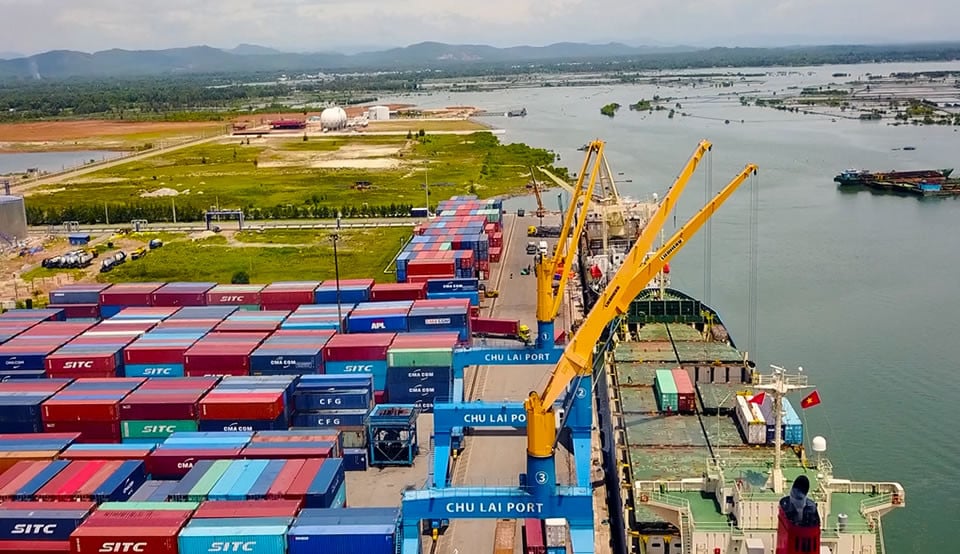
Về thu hút vốn đầu tư, trong khoảng 20 năm kể từ khi được ra đời, các KKT ven biển đã thu hút được nhiều dự án đầu tư vào sản xuất kinh doanh. Tính đến năm 2021, đã có 506 dự án nước ngoài đầu tư và 1648 dự án đầu tư trong nước thu hút vào các KKT ven biển. Trong đó, KKT ben biển Đình Vũ – Cát Hải thu hút được số dự án vào đầu tư lớn nhất với 205 dự án vốn đầu tư nước ngoài, 105 dự án đầu tư trong nước; KKT Nghi Sơn thu hút 19 dự án nước ngoài và 233 dự án trong nước; KKT Dung Quất thu hút 49 dự án nước ngoài và 195 dự án trong nước.
Các KKT ven biển đã thu hút được khoảng 49 tỷ USD vốn đầu tư trực tiếp nước ngoài, 1.245,5 nghìn tỷ đồng vốn đầu tư từ các đự án trong nước.
“Nhờ thu hút các dự án lớn đầu tư, các KKT ven biển nhanh chóng trở thành đầu tàu trong đóng góp vào nguồn thu ngân sách của các tỉnh/thành phố. Hiện tại, nhiều KKT ven biển đóng góp phần lớn vào nguồn thu ngân sách của các tỉnh như KKT Dung Quất đóng góp tới 80% tổng thu ngân sách của tỉnh, KKT Chu Lai đóng góp 65%, KKT Nghi Sơn đóng góp 61,3%, KKT Vũng Áng đóng góp 56%, KKT Phú Quốc chiếm 43,2%. Tạo việc làm lớn cho người lao động.
Đối với những tỉnh khó khăn, đây là nguồn ngân sách quan trọng giúp các địa phương tiếp tục đầu tư cơ sở hạ tầng phục vụ phát triển kinh tế xã hội. Đối với những địa phương này, KKT ven biển đang thực sự là cực tăng trưởng quan trọng nhất đối với phát triển công nghiệp và thu ngân sách địa phương…”, TS. Lê Văn Hùng đánh giá.
Theo vị này, các KKT ven biển đã bắt đầu hình thành một số cụm liên kết ngành như ở KKT Chu Lai về sản xuất và lắp ráp ô tô, về du lịch ở Phú Quốc, cụm hóa lọc dầu ở KKT Dung Quất, Nghi Sơn…
Đóng góp lớn tới phát triển kinh tế của địa phương
TS. Lê Văn Hùng nhìn nhận, khu kinh tế ven biển bước đầu đã có những đóng góp tích cực đối với quá trình phát triển đối với các địa phương, nhất là quá trình thúc đẩy phát triển công nghiệp và chuyển dịch cơ cấu để dần thu hẹp khoảng cách phát triển giữa các vùng miền.
Những đóng góp tích cực có thể kể đến như một số KKT ven biển đã tạo ra sự chuyển biến rõ rệt về phát triển kinh tế cho các tỉnh, thành phố về thu hút vốn đầu tư, đóng góp vào giá trị công nghiệp, giá trị xuất khẩu, nộp ngân sách nhà nước, cải thiện năng suất của người lao động. Nhiều khu KKT ven biển thực sự trợ thành trụ cột và có đóng góp lớn tới phát triển kinh tế của địa phương như KKT Nghi Sơn, Đình Vũ - Cát Hải, Vũng Áng, Chu Lai, Dung Quất, Phú Quốc.
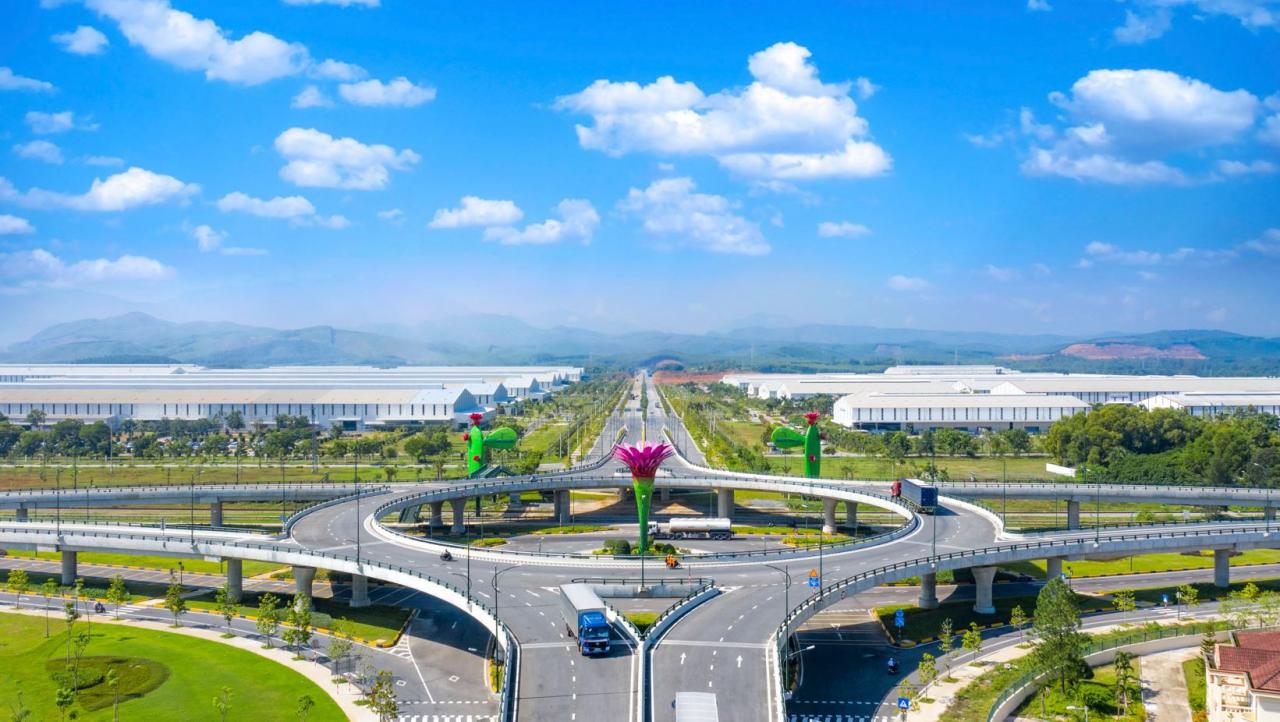
Nhờ hình thành xây dựng các KKT ven biển, cơ sở hạ tầng kinh tế xã hội ở các địa phương dần được đầu tư hoàn thiện. Một số KKT ven biển đã có sự chuyển biển rõ rệt về giao thông kết nối, hệ thống cảng và dịch vụ hậu cần cảng biển, sân bay, các KCN, cơ sở đào tạo, dịch vụ y tế nhờ cả vốn đầu tư từ ngân sách và huy động từ khu vực tư nhân trong và ngoài nước.
Tuy nhiên, theo TS. Lê Văn Hùng bên cạnh những kết quả tích cực, các KKT ven biển cũng bộc lộ một số những điểm hạn chế như chưa thực sự thu hút được các nhà đầu tư có chất lượng, có đủ năng lực tạo ra các sản phẩm có thương hiệu và năng lực cạnh tranh trên thị trường quốc tế.
Đặc biệt, các doanh nghiệp thu hút chưa tạo ra tác động lan tỏa lớn về phát triển cụm ngành, các ngành hỗ trợ để tạo ra sự chuyên môn hóa trong phát triển. Do đó, liên kết và hợp tác giữa các doanh nghiệp trong khu, giữa doanh nghiệp FDI và khu vực nội địa, giữa doanh nghiệp trong khu và ngoài khu còn rất hạn chế…
Bên cạnh đó, các doanh nghiệp lớn thu hút vào các KKT ven biển hiện chủ yếu tập trung vào các lĩnh vực thâm dụng tài nguyên và tiêu tốn năng lượng (như lọc hóa dầu, thép, nhiệt điện, hóa chất, xi măng, vật liệu xây dựng) nên những nguy cơ ảnh hưởng tiêu cực tới môi trường là khó tránh khỏi, đặc biệt là những tác động tới môi trường sinh thái trong dài hạn.
Ngoài ra, quá trình xây dựng, hoạt động kinh doanh công tác quản lý bảo vệ môi trường sinh thái vẫn chưa thực sự được kiểm soát, bảo vệ nghiêm ngặt. Nhiều KKT ven biển vẫn thiếu khu xử lý nước thải tập trung, thiếu khu thu gom chất thải nguy hại, rác thải.
Để thúc đẩy các KKT ven biển thực sự trở thành các động lực phát triển của địa phương và vùng, TS. Lê Văn Hùng đưa ra đề xuất, Việt Nam nên nghiên cứu nhằm có những chính sách trọng tâm thí điểm tạo môi trường phát triển từ 2 đến 3 cụm khu KKT ven biển theo vùng. Khi đó, nguồn lực mới thực sự được tập trung hoàn thiện cơ sở hạ tầng, dịch vụ xã hội và các công cụ bảo vệ, phục hồi môi trường sinh thái để tạo ra những KKT ven biển thực sự bền vững.
Đồng thời, các KKT ven biển cần thí điểm thực hiện một số mô hình phát triển như khu công viên công nghiệp xanh, khu hoạt động sản xuất kinh doanh theo hướng chuyên môn hóa/tập trung vào một nhóm ngành/lĩnh vực cụ thể.
Ho Giap
Source










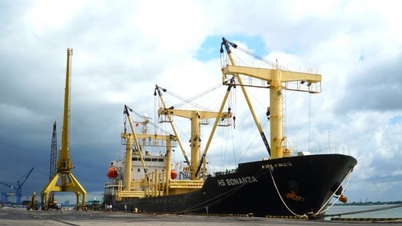



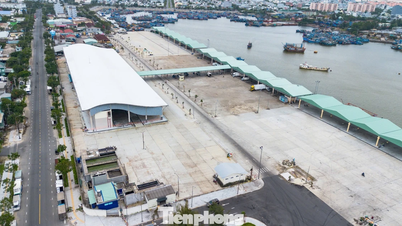

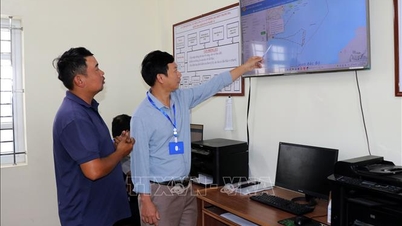































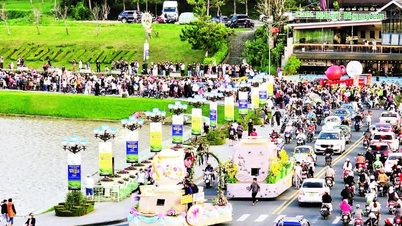

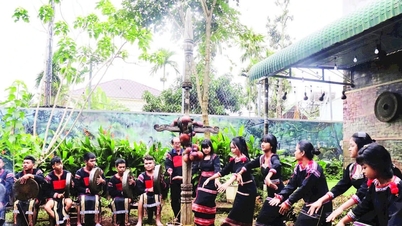












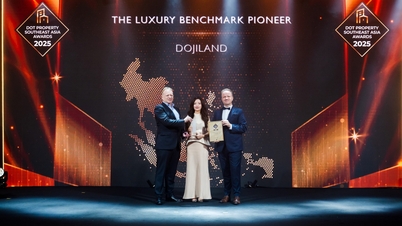


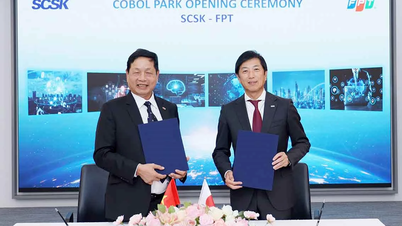

































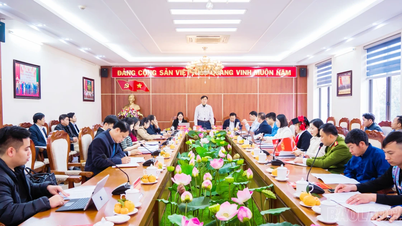











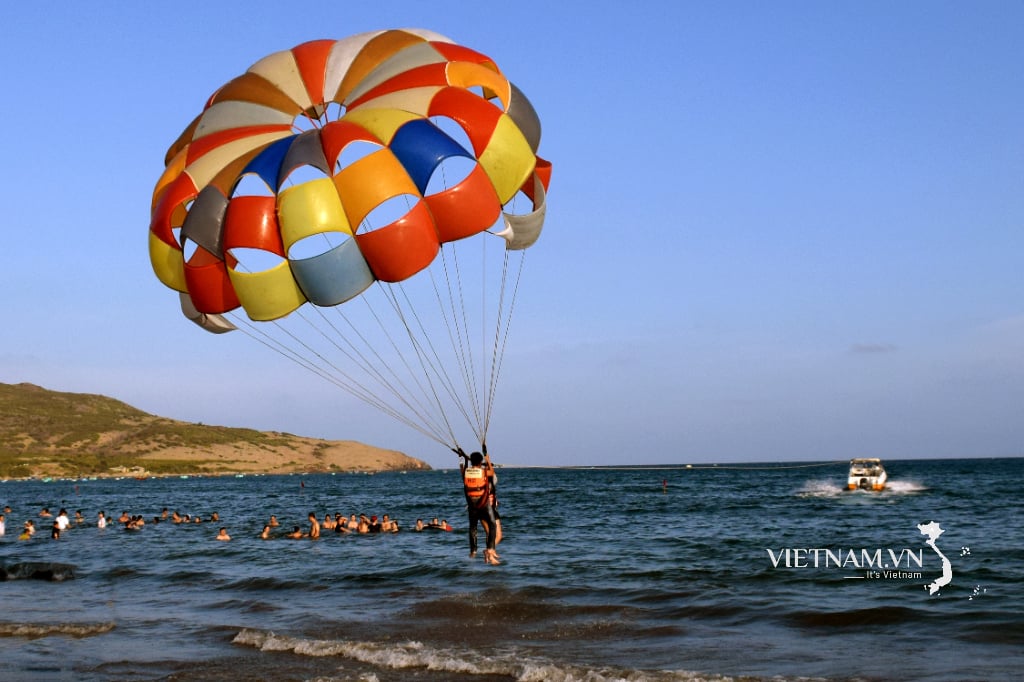

Comment (0)